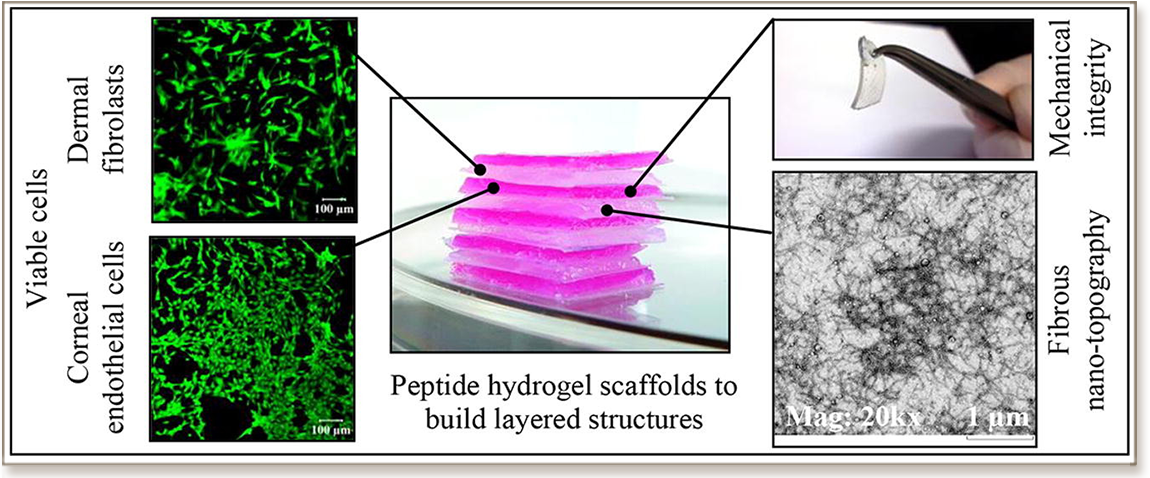
Thin peptide hydrogel membranes suitable as scaffolds for engineering layered biostructures
W.Y. Seow, K. Kandasamy, K. Purnamawati, W. Sun, C.A.E. Hauser
Acta Biomaterialia, 2019

A short tetramer peptide, Ac-IVKC, spontaneously formed a hydrogel in water. Disulfide bonds were introduced via hydrogen peroxide (H2O2)-assisted oxidation, resulting in (Ac-IVKC)2 dimers. The extent of disulfide bond formation and gel stiffness increased with the amount of H2O2 used and 100% dimerization was achieved with 0.2% H2O2. The resultant gel achieved an elastic modulus of ∼0.9 MPa, which to our knowledge, has not been reported for peptide-based hydrogels. The enhanced mechanical property enabled the fabrication of thin and transparent membranes. The hydrogel could also be handled with forceps at mm thickness, greatly increasing its ease of physical manipulation. Excess H2O2 was removed and the membrane was then infused with cell culture media. Various cells, including primary human corneal stromal and epithelial cells, were seeded onto the hydrogel membrane and demonstrated to remain viable. Depending on the intended application, specific cell combination or membrane stacking order could be used to engineer layered biostructures.
DOI: 10.1016/j.actbio.2019.02.001

"KAUST shall be a beacon for peace, hope and reconciliation, and shall serve the people of the Kingdom and the world."
King Abdullah bin Abdulaziz Al Saud, 1924 – 2015
Thuwal 23955-6900, Kingdom of Saudi Arabia
Al-Haytham Building (Bldg. 2)
© King Abdullah University of Science and Technology. All rights reserved